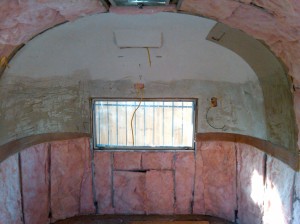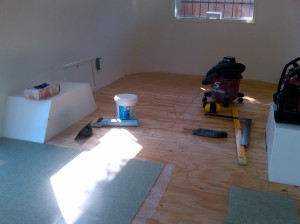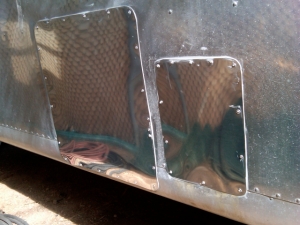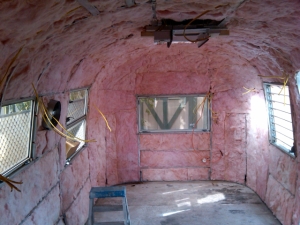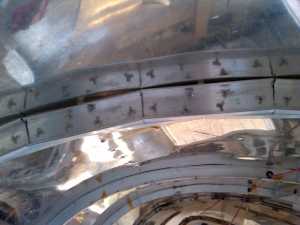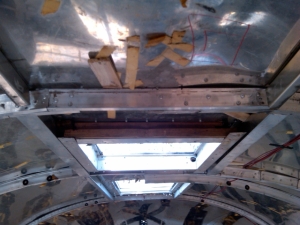Once the Airstream had been rewired and insulated, the interior skin went back on. I had numbered all the pieces and took numerous photos before I removed everything, so putting it all back on was pretty straightforward.
I purchased some cool clips called Clecos that fit in the drilled holes for the rivets and held the sheets in place temporarily while I put in all the other rivets. As one would expect these were
extremely helpful for the large sheets on the ceiling. It was basically a one day job to reattach and rivet all the panels and trim pieces around the windows.
The next day I lightly sanded all the new patches and any other areas that looked a little too smooth for painting, and primed all the interior surfaces with a good quality metal primer. Once the primer was dry I top coated everything with a low sheen
acrylic paint in a color called Swiss Coffee. It is a neutral white that was developed for use in art galleries and museums, so it was a perfect choice for the studio use of this trailer. Having the whole interior back in place and painted really brightened up the space.
Since the floor had numerous holes and patches I decided the best and most cost efficient route was to screw a new layer of plywood over the whole floor. This would not only stiffen things up, but also provide an nice uniform surface for the vinyl tile to adhere to. I cut some pieces of cardboard to template the rounded areas at both ends of the trailer and used them to get a good fit with my plywood. Once the new plywood was adequately screwed in place I covered it with Armstrong VCT in a nice vintage looking color called Granny Smith (like the apples). I then covered the small gap between the floor and the walls with a PVC quarter round moulding that I was able to bend around the curved ends of the trailer. With the exception of some light fixtures that hadn’t been decided upon yet, the interior remodel was complete. Things left to do included repairing the slightly bent door and putting new weatherstripping in all the windows.

